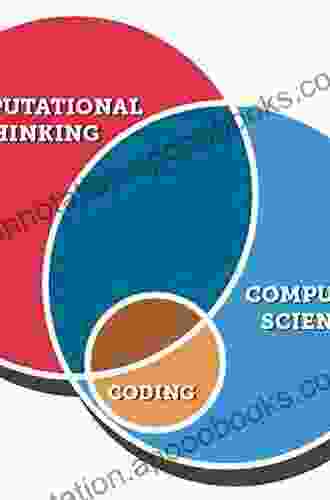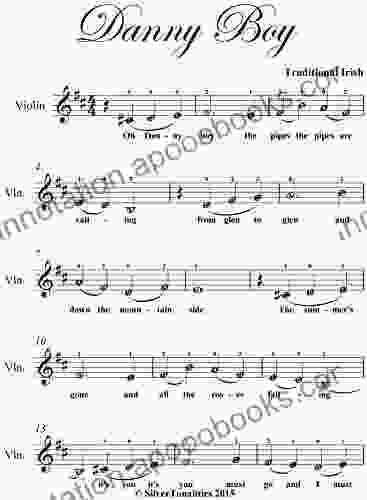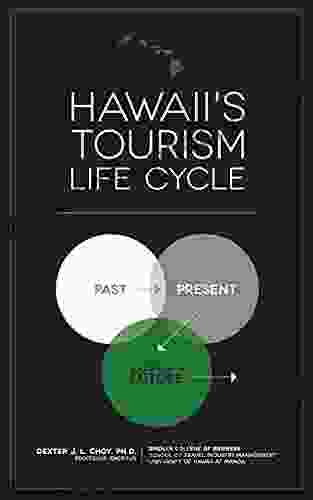Computational Thinking Education In 12: Unlocking the Power of Computer-Like Thinking

In the rapidly evolving digital landscape, computational thinking has emerged as a fundamental skill for individuals of all ages. With the release of 'Computational Thinking Education in 12,' we present an accessible and engaging guide to empower educators and students alike with this essential 21st-century competency.
5 out of 5
| Language | : | English |
| File size | : | 21688 KB |
| Text-to-Speech | : | Enabled |
| Enhanced typesetting | : | Enabled |
| Word Wise | : | Enabled |
| Print length | : | 274 pages |
| Screen Reader | : | Supported |
What is Computational Thinking?
Computational thinking encompasses a set of cognitive processes that enable individuals to analyze, represent, and solve problems like a computer. It involves breaking down complex problems into smaller steps, identifying patterns, and designing and implementing solutions using computational tools.
Benefits of Computational Thinking Education
Integrating computational thinking into education offers numerous benefits, including:
- Improved Critical Thinking and Problem-Solving Skills
- Enhanced Creativity and Innovation
- Greater Digital Literacy and Technological Fluency
- Preparation for Future Careers in STEM
- Increased Confidence and Self-Empowerment
Computational Thinking Concepts and Practices
'Computational Thinking Education in 12' introduces a comprehensive framework of essential computational thinking concepts and practices organized into four main pillars:
- Decomposition: Breaking down a problem into smaller, manageable parts.
- Pattern Recognition: Identifying and extracting patterns from data and information.
- Abstraction: Creating models and representations to simplify complex ideas.
- Algorithm Design: Developing step-by-step instructions to solve problems.
Curriculum and Activities
The book provides a comprehensive curriculum and a wide range of hands-on activities to facilitate the teaching and learning of computational thinking. These activities cover a wide spectrum of topics and grade levels, from elementary to high school.
Sample activities include:
- Using flowcharts to design algorithms for everyday tasks
- Creating data visualizations to analyze survey results
- Developing simple simulations to model real-world phenomena
- Designing and implementing a digital game
Assessment and Evaluation
'Computational Thinking Education in 12' emphasizes the importance of ongoing assessment and evaluation to monitor student progress and provide feedback. The book outlines various assessment strategies, including formative assessments, performance tasks, and portfolio development.
In 'Computational Thinking Education in 12,' we offer a comprehensive and practical guide to equipping students with the essential computational thinking skills they need to thrive in the digital age. By embracing the principles and practices outlined in this book, educators can empower their students to become critical thinkers, innovative problem-solvers, and confident users of technology.
Join us on this transformative journey of computational thinking and unlock the potential of every learner to shape the future of technology and innovation.
Free Download your copy of 'Computational Thinking Education in 12' today!
5 out of 5
| Language | : | English |
| File size | : | 21688 KB |
| Text-to-Speech | : | Enabled |
| Enhanced typesetting | : | Enabled |
| Word Wise | : | Enabled |
| Print length | : | 274 pages |
| Screen Reader | : | Supported |
Do you want to contribute by writing guest posts on this blog?
Please contact us and send us a resume of previous articles that you have written.
 Book
Book Novel
Novel Page
Page Chapter
Chapter Text
Text Story
Story Genre
Genre Reader
Reader Library
Library Paperback
Paperback E-book
E-book Magazine
Magazine Newspaper
Newspaper Paragraph
Paragraph Sentence
Sentence Bookmark
Bookmark Shelf
Shelf Glossary
Glossary Bibliography
Bibliography Foreword
Foreword Preface
Preface Synopsis
Synopsis Annotation
Annotation Footnote
Footnote Manuscript
Manuscript Scroll
Scroll Codex
Codex Tome
Tome Bestseller
Bestseller Classics
Classics Library card
Library card Narrative
Narrative Biography
Biography Autobiography
Autobiography Memoir
Memoir Reference
Reference Encyclopedia
Encyclopedia Mahmood Mamdani
Mahmood Mamdani Joe Biel
Joe Biel David Frei
David Frei Christopher H Owen
Christopher H Owen Chris Grabenstein
Chris Grabenstein Christopher Parton
Christopher Parton Laura J Dull
Laura J Dull Elaine Keillor
Elaine Keillor F Otieno
F Otieno Christopher Castellani
Christopher Castellani Gaye Theresa Johnson
Gaye Theresa Johnson Claude Mitschi
Claude Mitschi Christian Raymond
Christian Raymond Cixin Liu
Cixin Liu Chris Beckett
Chris Beckett Jean David Blanc
Jean David Blanc Princess F L Gooden
Princess F L Gooden Christopher Caldwell
Christopher Caldwell Claire Jamieson
Claire Jamieson Cheryl Hatch
Cheryl Hatch
Light bulbAdvertise smarter! Our strategic ad space ensures maximum exposure. Reserve your spot today!
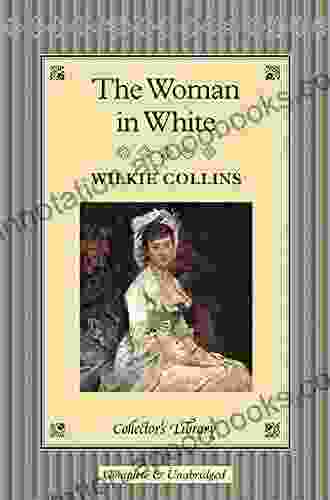
 Allen GinsbergUnveil the Enigmatic "The Woman in White": A Literary Masterpiece by Wilkie...
Allen GinsbergUnveil the Enigmatic "The Woman in White": A Literary Masterpiece by Wilkie... Jason HayesFollow ·14.2k
Jason HayesFollow ·14.2k John SteinbeckFollow ·17.7k
John SteinbeckFollow ·17.7k Gregory WoodsFollow ·9.5k
Gregory WoodsFollow ·9.5k Jorge Luis BorgesFollow ·18.2k
Jorge Luis BorgesFollow ·18.2k Reginald CoxFollow ·5k
Reginald CoxFollow ·5k Wade CoxFollow ·14.9k
Wade CoxFollow ·14.9k Marcel ProustFollow ·19.4k
Marcel ProustFollow ·19.4k Carson BlairFollow ·19.7k
Carson BlairFollow ·19.7k

 Kevin Turner
Kevin TurnerDive into the Enchanting World of "Crazy Like Fox": A...
Prepare yourself for a literary adventure...
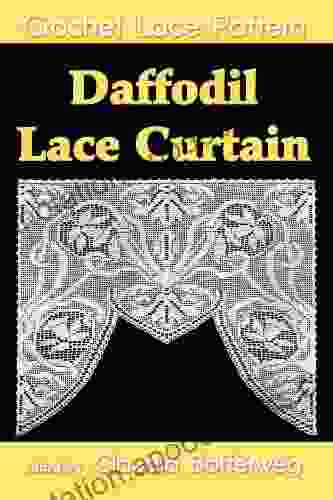
 Ralph Waldo Emerson
Ralph Waldo EmersonUnlock the Elegance of Daffodil Lace: An Immersive Guide...
: A Tapestry of Delicate...
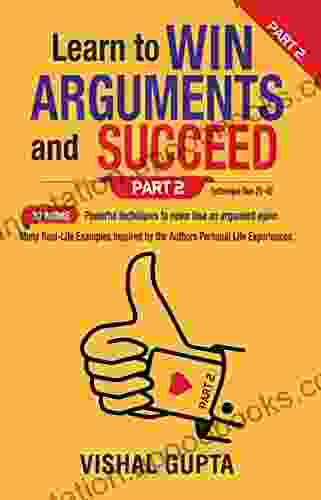
 Gerald Parker
Gerald ParkerNever Lose An Argument Again: 20 Powerful Techniques From...
Are you tired of losing...
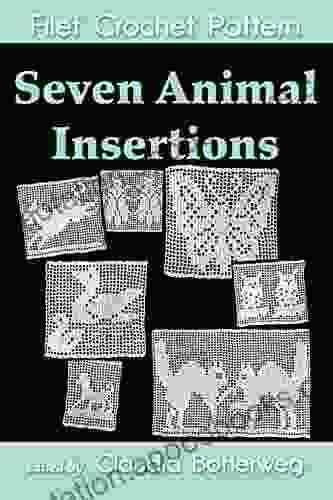
 Xavier Bell
Xavier BellSeven Animal Insertions Filet Crochet Pattern: Embark on...
Welcome to the captivating...

 Eugene Powell
Eugene PowellMagomago in TDS Magomago 12: An Unforgettable Adventure...
Step into the Enchanting World of...

 Marvin Hayes
Marvin HayesSoft Felting Needle Holder Excellence In Reborn Artistry
Unveiling the Secrets of the...
5 out of 5
| Language | : | English |
| File size | : | 21688 KB |
| Text-to-Speech | : | Enabled |
| Enhanced typesetting | : | Enabled |
| Word Wise | : | Enabled |
| Print length | : | 274 pages |
| Screen Reader | : | Supported |


